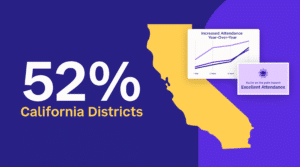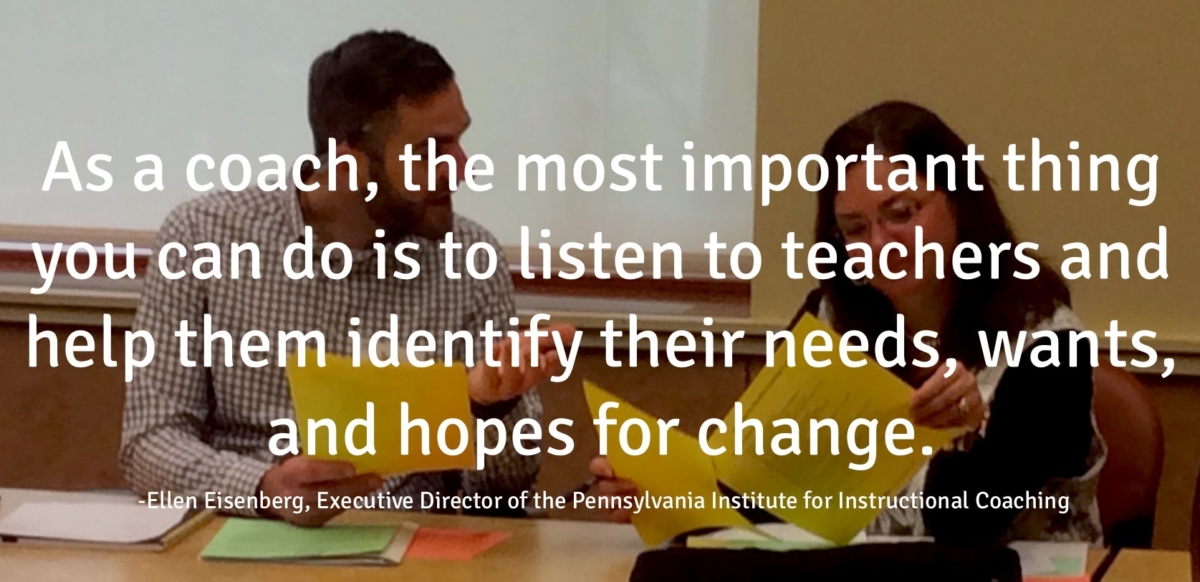
Featured Resource
Why Over Half of California School Districts Trust SchoolStatus
Read More >Join Mission: Attendance to reduce chronic absenteeism in 2025-26! >> Learn How <<






The summer is over, but if you’re like me, you’ve thought all summer long about how to help teachers increase student engagement, build their repertoire of teaching skills, and refine your own coaching practices at the same time.
August is a great time to think about effective instructional practice, the variety of ways to help teachers meet the needs of their students, and how your coaching practices need to be differentiated according to your teachers’ needs. How the coach begins the process is dependent upon two things: is the coach new to the school, or is this the next year of a coaching implementation? Either way, how coaches start the ball rolling and galvanize the teachers as the year begins is critical to a smooth operation.
This is the “no-judgment zone”; that is, you are there to give encouragement and help each teacher move forward in his/her practice, one conversation at a time.
A coach’s role is to help teachers become more reflective practitioners and to think about their thinking in ways that will help them make changes to their practice. Teachers need to make time to talk about teaching and learning and not try to squeeze in really important conversations in the few minutes they pass each other in the hallways. They need time to meet, think aloud, practice, and then reflect about how students learn. The coach needs to make those opportunities for collaboration a reality, not just wishful thinking.
As Joellen Killion states, coaches are “catalysts for change” and are “visionaries who are never content with the status quo but rather always looking for a better way.” As you listen to your teaching colleagues, remember that your role is to ask questions that generate thought-provoking conversations and which lead to improved practices. Coaches are not the experts who know the answers; coaches help their teaching colleagues continually refine their practices by asking questions, expanding their tool kits, and guiding them to take ownership of their learning.
{{cta(‘aff0699e-2d29-45d5-accf-60ab441f603f’,’justifycenter’)}}
Ellen Eisenberg is the Executive Director of the Pennsylvania Institute for Instructional Coaching (PIIC). PIIC, a partnership of the Annenberg Foundation and the Pennsylvania Department of Education, is a statewide resource for developing and supporting consistent, high-quality instructional coaching in Pennsylvania schools.
{{cta(‘352a410e-db79-4f33-a482-d301e8041965’)}}
 SchoolStatusSchoolStatus gives educators the clarity and tools they need to get students to class and keep them moving ahead. Through our integrated suite of data-driven products, we help districts spot attendance patterns early, reach families in ways that work for them, and support teacher growth with meaningful feedback. Our solutions include automated attendance interventions, multi-channel family communications in 130+ languages, educator development and coaching, streamlined digital workflows, and engaging school websites. Serving over 22 million students across thousands of districts in all 50 states, SchoolStatus helps teachers and staff see what matters, act with speed, and stay focused on students.
SchoolStatusSchoolStatus gives educators the clarity and tools they need to get students to class and keep them moving ahead. Through our integrated suite of data-driven products, we help districts spot attendance patterns early, reach families in ways that work for them, and support teacher growth with meaningful feedback. Our solutions include automated attendance interventions, multi-channel family communications in 130+ languages, educator development and coaching, streamlined digital workflows, and engaging school websites. Serving over 22 million students across thousands of districts in all 50 states, SchoolStatus helps teachers and staff see what matters, act with speed, and stay focused on students.
News, articles, and tips for meeting your district’s goals—delivered to your inbox.






